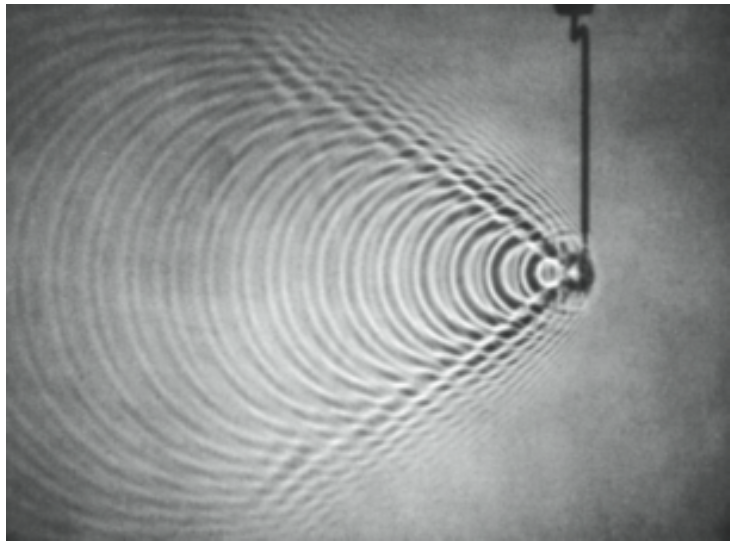
تاريخ الفيزياء

علماء الفيزياء


الفيزياء الكلاسيكية

الميكانيك

الديناميكا الحرارية


الكهربائية والمغناطيسية

الكهربائية

المغناطيسية

الكهرومغناطيسية


علم البصريات

تاريخ علم البصريات

الضوء

مواضيع عامة في علم البصريات

الصوت


الفيزياء الحديثة


النظرية النسبية

النظرية النسبية الخاصة

النظرية النسبية العامة

مواضيع عامة في النظرية النسبية

ميكانيكا الكم

الفيزياء الذرية

الفيزياء الجزيئية


الفيزياء النووية

مواضيع عامة في الفيزياء النووية

النشاط الاشعاعي


فيزياء الحالة الصلبة

الموصلات

أشباه الموصلات

العوازل

مواضيع عامة في الفيزياء الصلبة

فيزياء الجوامد


الليزر

أنواع الليزر

بعض تطبيقات الليزر

مواضيع عامة في الليزر


علم الفلك

تاريخ وعلماء علم الفلك

الثقوب السوداء


المجموعة الشمسية

الشمس

كوكب عطارد

كوكب الزهرة

كوكب الأرض

كوكب المريخ

كوكب المشتري

كوكب زحل

كوكب أورانوس

كوكب نبتون

كوكب بلوتو

القمر

كواكب ومواضيع اخرى

مواضيع عامة في علم الفلك

النجوم

البلازما

الألكترونيات

خواص المادة


الطاقة البديلة

الطاقة الشمسية

مواضيع عامة في الطاقة البديلة

المد والجزر

فيزياء الجسيمات


الفيزياء والعلوم الأخرى

الفيزياء الكيميائية

الفيزياء الرياضية

الفيزياء الحيوية

الفيزياء العامة


مواضيع عامة في الفيزياء

تجارب فيزيائية

مصطلحات وتعاريف فيزيائية

وحدات القياس الفيزيائية

طرائف الفيزياء

مواضيع اخرى
CERENKOV RADIATION
المؤلف:
E. R. Huggins
المصدر:
Physics 2000
الجزء والصفحة:
996
2-1-2021
1780
CERENKOV RADIATION
We saw that nothing, not even information, could travel faster than the speed of light. If it did, we could, for example, get answers to questions that had not yet been thought of. When moving through a medium, the speed of a light wave is slowed by repeated scattering and it is no longer true that nothing can move faster than the speed of light in that medium. We saw for example that the speed of light in water is only 3/4 the speed c in vacuum. Many elementary particles, like the muons in the muon lifetime experiment, travel at speeds much closer to c. When a charged particle moves faster than the speed of light in a medium, we get an effect not unlike the sonic boom produced by a supersonic jet. We get a shock wave of light that is similar to a sound shock wave (sonic boom), or to the water shock wave shown in Figure (1) reproduced here. The light shock wave is called Cerenkov radiation after the Russian physicist Pavel Cerenkov who received the 1958 Nobel prize for discovering the effect.

Figure 1: When the source of the waves moves faster than the speed of the waves, the wave fronts pile up to produce a shock wave as shown. This shock wave is the sonic boom you hear when a jet plane flies overhead faster than the speed of sound.
In the muon lifetime picture, one observed how long muons lived when stopped in a block of plastic. The experiment was made possible by Cerenkov radiation. The muons that stopped in the plastic, entered moving faster than the speed of light in plastic, and as a result emitted a flash of light in the form of Cerenkov radiation. When the muon decayed, a charged positron and a neutral neutrino were emitted. In most cases the charged positron emerged faster than the speed of light in the plastic, and also emitted Cerenkov radiation. The two flashes of light were detected by the phototube which converted the light flashes to voltage pulses. The voltage pulses were then displayed on an oscilloscope screen where the time interval between the pulses could be measured. This interval represented the time that the muon lived, mostly at rest, in the plastic.
 الاكثر قراءة في مواضيع عامة في علم البصريات
الاكثر قراءة في مواضيع عامة في علم البصريات
 اخر الاخبار
اخر الاخبار
اخبار العتبة العباسية المقدسة

الآخبار الصحية















 قسم الشؤون الفكرية يصدر كتاباً يوثق تاريخ السدانة في العتبة العباسية المقدسة
قسم الشؤون الفكرية يصدر كتاباً يوثق تاريخ السدانة في العتبة العباسية المقدسة "المهمة".. إصدار قصصي يوثّق القصص الفائزة في مسابقة فتوى الدفاع المقدسة للقصة القصيرة
"المهمة".. إصدار قصصي يوثّق القصص الفائزة في مسابقة فتوى الدفاع المقدسة للقصة القصيرة (نوافذ).. إصدار أدبي يوثق القصص الفائزة في مسابقة الإمام العسكري (عليه السلام)
(نوافذ).. إصدار أدبي يوثق القصص الفائزة في مسابقة الإمام العسكري (عليه السلام)


















